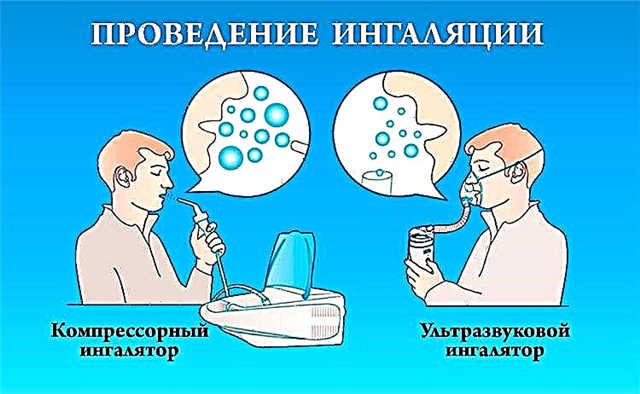Everyone knows that nicotine, which is contained in tobacco smoke, negatively affects blood vessels, and, accordingly, smoking affects blood pressure. But how is the effect of tobacco smoke reflected on the vessels? Does smoking raise or lower blood pressure?
An addiction that affects blood pressure is both immediate and distant. The immediate impact is due to one cigarette smoked. The long-term negative effect of cigarettes is exerted not only on pressure, but also on the heart, lungs, and blood vessels.
Instant effect of tobacco smoke on blood vessels
 The reaction of vessels to tobacco smoke is determined by an indirect mechanism. When nicotine enters the body, a negative signal is sent to the vascular center in the brain, after which the brain gives an alert to the body about protection. The adrenal glands respond to this signal, activating a protective-adaptive response. During this reaction, certain hormones are produced - catecholamines (adrenaline, norepinephrine), which stimulate alpha receptors in the vascular walls. When stimulated, the arteries narrow.
The reaction of vessels to tobacco smoke is determined by an indirect mechanism. When nicotine enters the body, a negative signal is sent to the vascular center in the brain, after which the brain gives an alert to the body about protection. The adrenal glands respond to this signal, activating a protective-adaptive response. During this reaction, certain hormones are produced - catecholamines (adrenaline, norepinephrine), which stimulate alpha receptors in the vascular walls. When stimulated, the arteries narrow.
The blood pressure level is determined by three main indicators:
- vascular tone;
- circulating blood volume;
- resistance (resistance) of blood vessels.
To the frequently asked question “cigarettes increase or decrease blood pressure,” doctors confidently answer: the pressure is definitely increasing.
Violation of even one indicator, which is responsible for pressure, leads to pathological changes in others, therefore, to changes in blood pressure. Under the influence of nicotine, the vessels narrow, as a result of which resistance increases and the elasticity of the vascular walls decreases.
Long-term reaction of the body to smoking
Does smoking provoke the onset of chronic pathology (hypertension)? Yes. The above response is based on a single cigarette. That is, even if you are not a heavy smoker, having smoked one cigarette, the reaction will be instant. What can we say about a constant habit. With each cigarette smoked, the condition of the vascular walls worsens, the lumen becomes smaller, and the blood volume decreases.
Over time, less and less blood will flow to the heart, and with it oxygen, which is simply necessary for all organs and tissues. As a result of this effect, ischemic heart disease (oxygen deficiency) develops, attacks of angina pectoris and tachycardia appear. Without eliminating the root cause - smoking, the risk of developing myocardial infarction, stroke, hemolytic anemia and other severe pathologies is possible.
From a medical point of view, such a reaction is due to a disruption in the work of baroreceptors, which are scattered throughout the vessels. They are responsible for the natural stabilization of disorders in the vascular system. Under the regular influence of external factors, baroreceptors stop responding to negative influences. The body does not provide a protective reaction, and the pathology can become chronic. Thus, tobacco smoke gradually damages blood vessels, destroying their walls, on which cholesterol plaques form.
Damage to the vascular walls, which provokes smoking, in combination with concomitant external factors (junk food, alcohol consumption, physical inactivity) create an ideal environment for the development of atherosclerosis.
In the process of a pathological condition, the lumen of the vessels narrows, which not only provokes high blood pressure, but also causes its persistent fixation at high rates, which in medicine is defined as arterial hypertension.
Atherosclerotic accumulations can form in all vessels. The most terrible and harmful are found in the vessels of the brain, kidneys and myocardium. Incorrect work of the vascular system in these departments provokes the occurrence of stroke (lack of oxygen, which comes with the blood, in the brain), coronary heart disease (insufficient myocardial nutrition), myocardial infarction, ischemia and other pathologies.
If you list all the possible complications that may arise against the background of this bad habit, the question of smoking increases or decreases blood pressure, will disappear. More serious arguments will emerge for quitting addiction.
Hypertension is a serious pathology that can cause a number of serious complications. Without eliminating the main root causes of the disease, the pathology cannot be rendered harmless. After receiving an informative explanation of how smoking affects a person's pressure, it can be noted that cigarettes increase the readings on the tonometer and can provoke the development of chronic and acute cardiovascular pathologies.
To cure hypertension, first of all, you should give up bad habits.
Interesting Facts
Many people know about the dangers of smoking since school years. Children are shown videos, conducted trainings, provided with literature that confirms the harmfulness of a bad habit. Doctors have conducted a large number of studies on how cigarettes affect the human body.
Medical research has established:
- Smokers suffer from chronic bronchitis 5-7 times more often than non-smokers.
- One cigarette contains about 3000 chemical compounds, some of which are carcinogenic. This element can influence the genetic code of a human cell and stimulate the growth of cancer cells. It has been reported that 10% of smokers die from cancer.
- Smokers experience myocardial infarction 8-9 times more often.
- For people who smoke, the risk of death from coronary artery disease increases to 30-40%.
There are a lot of similar studies and, probably, everyone has heard more than once about the above risk from loved ones, doctors, and healthy lifestyle activists.
Before the adoption of the precise definition that smoking is harmful, there were many events that were recorded in the history of mankind. These facts may be funny to a modern person, since they completely contradict the established vision.
- In the 19th century, doctors recommended that pregnant women smoke to avoid gaining weight during this period.
- In 1588, Thomas Harriet actively promoted smoking as a method of complete healing and healing.
- In 1571, Doctor of Sciences Nicholas Mondares published a book on medicinal plants of the New World, where he described tobacco as a remedy for 36 diseases.
- In 1634, there was a big fire in Moscow. The cause of the fire was attributed to an unextinguished cigarette butt. After such a statement, a ban on smoking in public places was passed. The punishment for his failure was the beheading of the head.
- Great Britain was the first to set the so-called "smoking fashions in the Old World". She was the first to ban advertising tobacco products in the media in 1965.
It took a very long time for a person to be able to research tobacco and understand that it causes severe harm to the body. Today there are about 2000 methods of getting rid of tobacco dependence, but only 40 of them are practiced. Over time, doctors figured out all the pressing issues: smoking increases or decreases blood pressure, how tobacco affects internal organs, whether smoking contributes to weight loss, whether smoking slows down mental activity. Any smoker should understand that a cigarette is a ticking time bomb. Systematic smoking leads to inevitable complications in the functioning of the whole organism. In addition, tobacco smoke destroys not only from the inside, but also from the outside.A smoker can be recognized by unhealthy yellowish teeth, dull skin, the presence of wrinkles at an early age.
95% of smokers give up cigarettes after suffering myocardial infarction. You should not bring your body to this level. Let the threat to life not be the most powerful argument. It is better to prevent this condition and quit smoking earlier.



